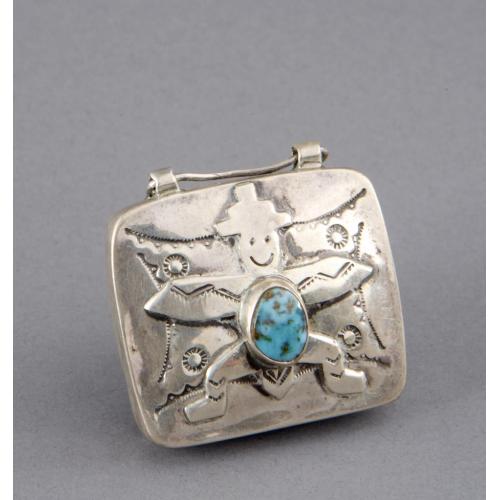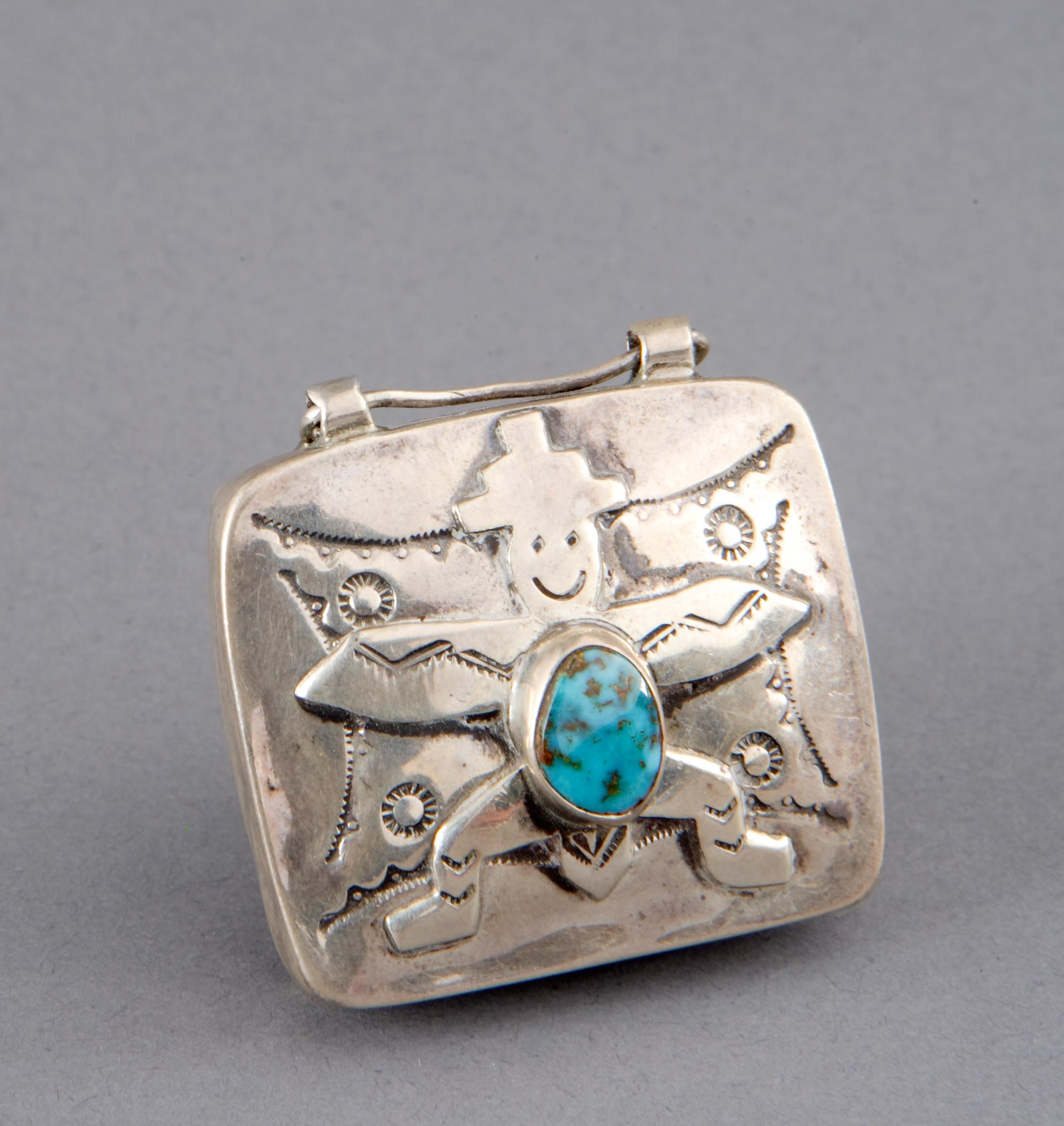
Photograph by Addison Doty. Copyright 2010 School for Advanced Research.
Pill box
Date: 1940-1960s
Artist or Maker: Unknown
Dimensions:
Overall: 3.8 x 1.1 x 3.5 cm (1 1/2 x 7/16 x 1 3/8 in.)
Medium: silver | turquoise
Credit Line: Indian Arts Fund purchase for the permanent collection, 1985. Funds for purchase provided by The Philip R. Jonsson Foundation and Richard H. Canon.
Place Made:
Zuni Pueblo, McKinley County, New Mexico, Southwest, United States, North America
Object Number: SAR.1985-1-38
Not on view
Tribal Collection Review RemarksJim Enote and Octavius Seowtewa during collection review visit December 7 and 8, 2010 (Events Record “Collection Review: Zuni Tribe, Review 5”): The materials used are silver and turquoise. The current catalog description identifies the figure on the lid as “Knifewing God.” However, it should be changed to just “Knife Wing.”
Knife Wing is a figure in Zuni stories who helped the Zuni people find their homelands. Because he could fly he was able to help them find a good place to live. He is a symbol of strength and is associated with War Chiefs. He is also depicted on some types of altars. Knife Wing is always depicted as dressed very similarly to an Eagle Dancer. The difference between the two is that Knife Wing's face is different from an Eagle Dancer's face (for example, Knife Wing wears a round face with a cloud step headdress and the face doesn't include a beak). Though dressed much like an Eagle Dancer, Knife Wing is only a symbol and is not represented in dances. The Zuni name for Knife Wing is Achiyaladaba.
In Collection(s)
The Indian Arts Research Center, in collaboration with Native American community scholars, strives to present accurate collections records. Records may be updated as new information becomes available and is reviewed with the Native American community having cultural affinity to particular items. Please write to iarc@sarsf.org if you have questions or concerns related to the documentation.
